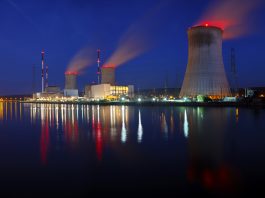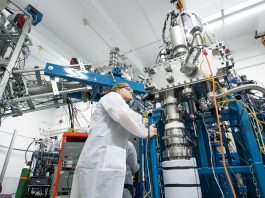A research team from Hiroshima University has investigated how CO2 emissions in Tokyo have suffered following the closure of three of its nuclear power plants.
Since 2003 – when the nuclear power plant closures began – scientists suspected that this would have negative implications for the city’s consumption-based CO2 emissions, as electricity was supplied through other means. To understand the long-term implications of this change to Tokyo’s power grid, researchers from Hiroshima University (HU) studied how CO2 emissions in Tokyo have changed as a result of the power plant closures.
The findings from this study were recently published in Urban Climate.
“In this study, we analysed the changes in the carbon mitigation responsibility of Tokyo after the electricity supply shock caused by nuclear power plant accidents to examine how dependence on electricity supply affects CO2 emissions. In other words, we examined if the suspension of the nuclear power plant has impacted Tokyo’s carbon dioxide emissions,” explained Ayyoob Sharifi, corresponding author and a Professor at the IDEC Institute at HU.
The shutdown of nuclear power plants: Understanding Tokyo’s carbon mitigation responsibility
The three nuclear power plants that supplied Tokyo with its power were shut down due to inspection in 2003, the Niigata Chuetsu-Oki Earthquake in 2007, and the Great East Japan Earthquake in 2011. Since the power plant closures, the electricity that was generated by nuclear power has been reduced by one-third. Thus, understanding the difference in CO2 emissions before and after the nuclear power plant closures could help researchers to understand Tokyo’s carbon mitigation responsibility in the future and meet the targets of the Paris climate agreement.
Scientists have observed that Tokyo is important to study in terms of global carbon mitigation efforts. Tokyo has shifted from an industrial city to a service city, which means that a majority of the goods and services that the area consumes are produced outside of the city instead of within. Every year, the population of Tokyo increases and, along with it, the demand for goods and services.
“We discovered that there was no significant change in Tokyo’s consumption-based emissions. Also, due to the shift from nuclear to thermal power plants, the CO2 emissions embodied in electricity imported from outside the city have increased. We argue that since local governments in Japan report their emission data based on the electricity imported from outside the city boundaries, their reported data (on their climate change mitigation responsibility) are underestimated,” said Masaru Ichihashi, co-author, and a Professor at the IDEC Institute at Hiroshima University.
From nuclear power to thermal power
This increase in CO2 emissions from the creation, storage, and transportation of electricity from outside the city was directly related to the change from nuclear power to thermal power.
“Proper emission accounting should also consider other emissions, including those associated with other services and imported goods and products. Since Tokyo’s consumption structure has remained steady over the past few decades, we assume that Tokyo’s emission responsibility will not change unless there is a major switch to more low-carbon and sustainable consumption and production patterns in the city,” added Shinji Kaneko, co-author, and a Professor at the IDEC Institute at Hiroshima University. “This would include finding a more sustainable way to produce electricity for the city.”
Looking ahead, researchers intend to continually monitor how Tokyo’s CO2 emissions change over time.
“We would also like to examine how local initiatives such as waste recycling and renewable energy generation are developed and implemented in the city and how successful they are in facilitating the transition towards the low-carbon economy and meeting the ambitious climate change mitigation targets of the city (aligned with the targets of the Paris Climate Agreement),” concluded Kae Murakami, lead author from the City of Hiroshima.









